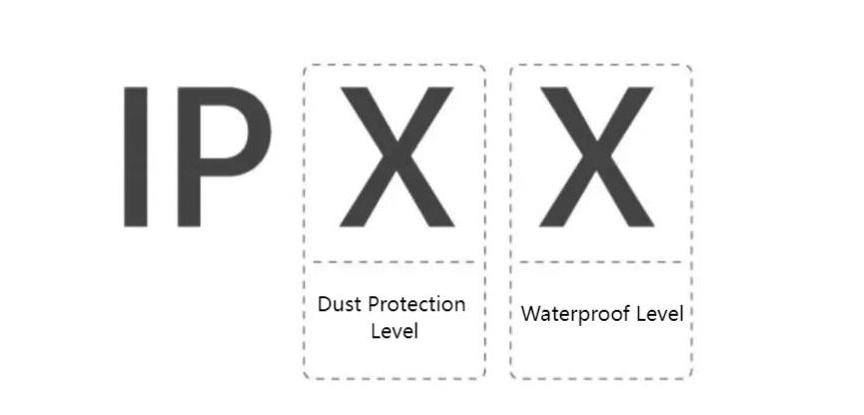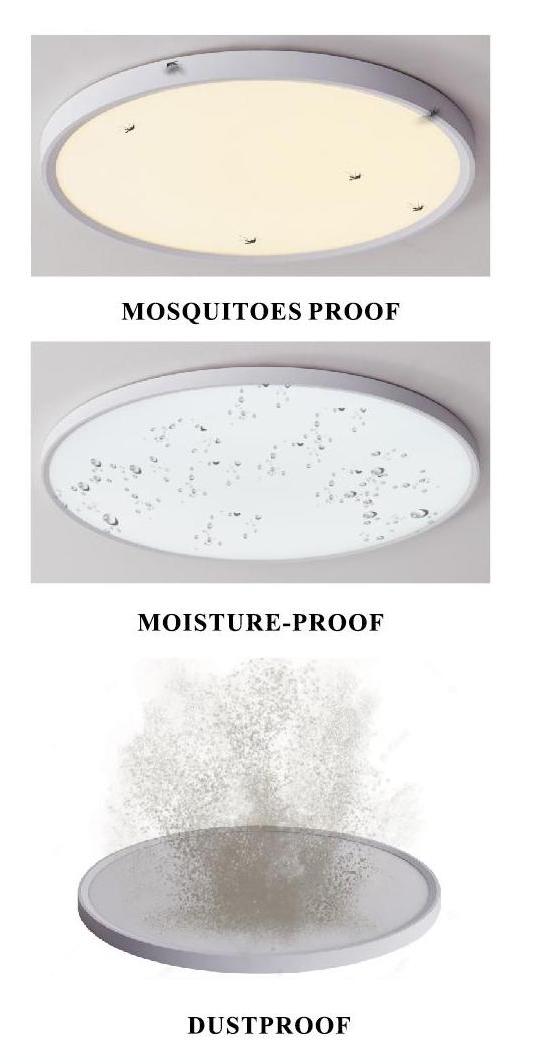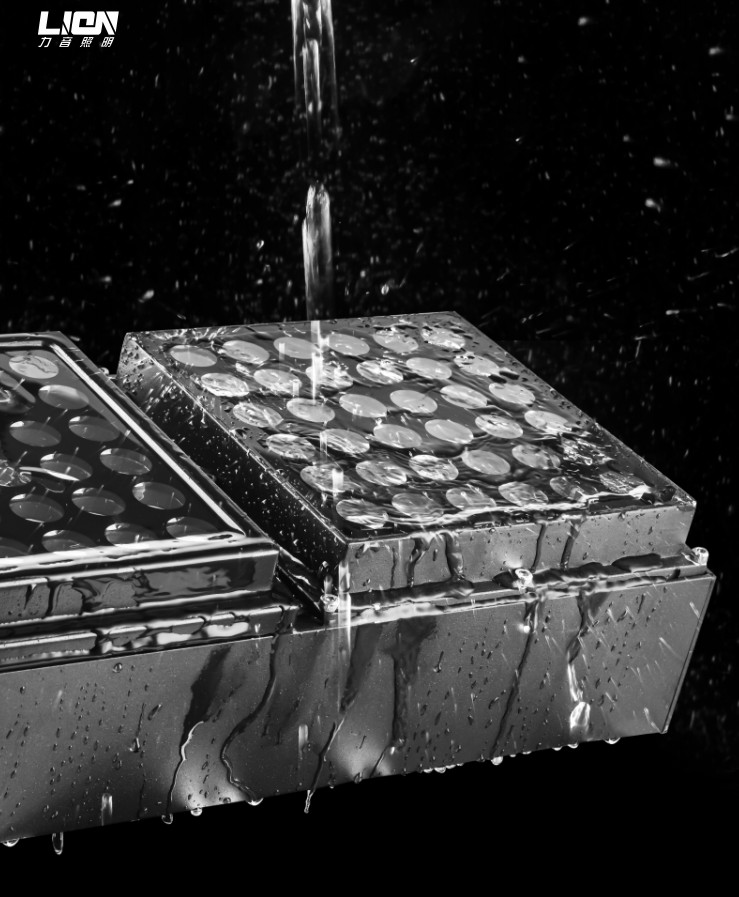When choosing a lighting fixture, we're often bombarded with various parameters, but the "IP rating" is particularly crucial. It not only affects the lifespan of the fixture but also directly impacts electrical safety. While IP44 and IP65 are common ratings, their differences and applicable scenarios warrant further discussion.

I. IP Ratings: A Double Code to Protect Your Lighting
v The IP code (Ingress Protection Rating), established by the International Electrotechnical Commission (IEC), provides an internationally recognized standard for the resistance of electrical equipment to the intrusion of solid foreign objects and liquids. The code consists of the "IP" prefix followed by two digits:
v The first digit (0-6) indicates the degree of protection against dust and solid foreign objects. A higher number indicates greater resistance.
v The second digit (0-9) indicates the degree of water resistance. A higher number indicates greater water resistance.
II. IP44: Indoor Splashproof
v Dustproof/Foreign Object Proof (first digit 4): Effectively prevents the ingress of solid foreign objects ≥1.0mm in diameter (such as large insects and thick tool wires). While not completely sealed, it is adequate for general household dust.
v Waterproof (second digit 4): Withstands splashes from all directions (such as incidental water splashes near kitchen sinks, bathroom mirrors, and indoor condensation). Testing is performed using a 10-minute water spray (flow rate approximately 10L/min).

Typical Application Scenarios:
v Dry Indoor Areas: Main lighting in living rooms, bedrooms, and study rooms.
v Moderate Humidity Areas: Kitchen countertop lighting (avoiding stoves), enclosed balcony lighting, and bathroom mirror lights or ceiling lights with dry/wet separation.
v Basements/Garages (not directly exposed to water): General storage area lighting.
v Core Advantages: Low cost, meeting most basic indoor protection needs.
III. IP65: Protector for Outdoor and Harsh Environments
Dustproof/Foreign Object Resistance (first digit: 6): Dust-tight protection. Completely blocks dust intrusion, thoroughly protecting sensitive internal components (such as LED drivers and chips).
Waterproof (second digit: 5): Withstands low-pressure water jets from all directions (such as rain and car wash hoses). Tested using a 3-minute water spray (nozzle diameter: 6.3mm, flow rate approximately 12.5L/min, pressure 30kPa, distance 3 meters).
Typical Application Scenarios:
v Outdoor environments: Garden lights, porch lights, landscape lights, and building exterior lighting.
v High-humidity/splash-prone areas: Open balconies, wet areas in bathrooms with non-dry and wet area separation (near shower rooms), and above kitchen stoves (double challenge from cooking fumes and water vapor).
v Dusty/special environments: Garages (especially those where vehicles enter and exit, creating dust and water mist), industrial workshops, warehouses, and agricultural facilities.
v Areas requiring regular flushing: Commercial kitchen operating areas and lighting in food processing areas.
v Core Advantages: Comprehensive protection, adaptable to harsh environments, significantly extended lamp life, and higher safety.
IV. Key Differences: More Than Just Numbers
Characteristic | IP44 | IP65 | Actual impact |
Dustproof | Protected against solid foreign objects ≥ 1mm (not dust-tight) | Completely dustproof (dust-tight) | IP65 prevents short circuits, overheating, and light decay caused by dust accumulation; IP44 requires more frequent cleaning. |
Waterproof | Proof against water splashes from all directions | Proof against low-pressure water jets from all directions | IP65 can withstand heavy rain and washing, while IP44 can only cope with occasional splashes. |
Structural sealing | General seal (e.g., simple gaskets) | Advanced sealing (multiple gaskets/special packaging) | IP65 technology is more complex and more expensive, but its long-term reliability is significantly improved. |
Applicable environment | Indoor dry/medium humidity areas | Outdoor/Harsh Indoor | IP65 is the "safety pass" for outdoor and high-risk areas. |
Maintenance requirements | Relatively high humidity (requires regular dust removal) | Very low | IP65 saves worry and effort, especially in high dust environments. |
5. How to Choose Accurately? Scenario-Based Decision Guide
When choosing a lighting fixture, the protection level isn't always "the higher, the better." It requires a comprehensive assessment based on the specific environment, budget, and risks.
Critically evaluate the installation environment:
Purely indoor, dry areas (living room/bedroom/study): IP20 (no special protection) or IP44 is sufficient. IP65 is overkill.
Kitchen:
v Under-cabinet lights/operating table lights away from water sources: IP44 is sufficient.
v Near sinks or stoves (where heavy smoke and water vapor are present): IP65 is strongly recommended.
Bathroom/Restaurant:
v Dry areas (over washbasins/toilet areas): IP44 is the minimum.
v Wet areas (shower rooms/over bathtubs): IP65 is a must (usually IP65 or higher, such as IP67, is required). The closer to the water source, the higher the requirements.
Balcony (Enclosed vs. Open):
v Enclosed balconies: IP44 is generally sufficient.
v Open balconies: IP65 is required to withstand direct wind and rain.
Garage/Basement:
v Dry and clean storage areas: IP44 is acceptable.
v Vehicle access areas (exhaust, muddy water, and cleaning): IP65 is required.
v Outdoors (courtyards/gardens/exterior walls): IP65 is the most basic and widely applicable requirement. Consider the impact of wind pressure and rain.
Pay attention to potential risks and costs:
v Safety first: In areas with high water and dust threats, IP65 is preferred. The risk of leakage and short circuits due to insufficient protection far outweighs the price difference of the lamp.
v Lifespan and maintenance costs: IP65 offers a longer lifespan and requires less maintenance in harsh environments, making it potentially more economical in the long run.
v Avoid over-configuration: Choosing IP65 for dry, low-dust indoor environments not only increases the purchase cost, but its tighter sealing may also affect heat dissipation (this requires careful consideration of product design).
v Carefully read product specifications and certifications:
v Clear markings: Look for "IP44" or "IP65" clearly marked on the lamp nameplate or manual. l Be wary of vague advertising: Terms like "outdoor use" and "rainproof" require specific IP rating support. IP65 is the only reliable guarantee.
v Authoritative certification: Check whether the product has passed testing according to the IEC 60529 standard or corresponding national standards (such as GB 4208).
VI. Expert Advice and Common Misconceptions
v Myth: "The bathroom has a suspended ceiling, so the lamps won't get wet; IP44 is sufficient."
v Truth: Even with a suspended ceiling, wet areas in the bathroom (especially shower rooms) experience high temperatures and high humidity, creating a pervasive environment where water vapor easily penetrates and corrodes non-highly protected lamps. IP65 is the baseline for safety.
v Myth: "The balcony has an awning, so IP44 lamps are fine."
v Truth: Strong winds often carry rainwater diagonally, making it difficult for ordinary awnings to fully block it. IP65 provides a more reliable barrier.
v Recommendation: For critical areas (such as wet bathroom lighting and primary outdoor lighting), prioritize IP65. This one-time investment offers long-term safety and peace of mind. When purchasing, pay attention to the heat dissipation design of the lamp. High-quality IP65 products utilize optimized structures to ensure heat dissipation.
Conclusion: Smart Choices, Lighting Up Safety and Comfort
IP44 and IP65, while seemingly simple numerical combinations, are crucial safeguards for a lamp's stable operation in complex environments. IP44 protects against standard indoor conditions, providing basic protection; while IP65 is a versatile warrior for challenging outdoor conditions, offering comprehensive safety assurance. By understanding the differences and carefully considering specific application scenarios, you can select the ideal lamp that is both bright and durable—keeping safety and light with you at all times. With the increasing popularity of smart lighting, choosing the right level of protection lays a solid and reliable foundation for smart home living.




